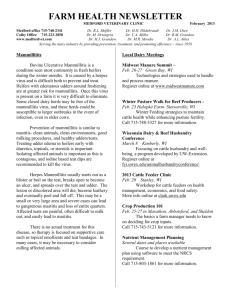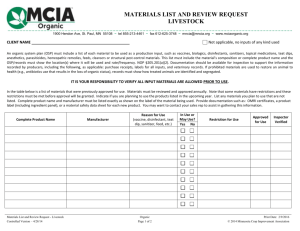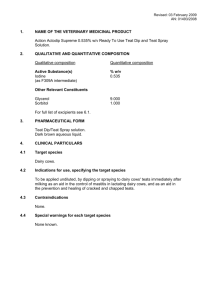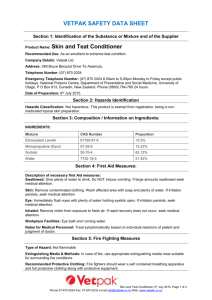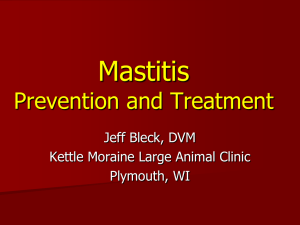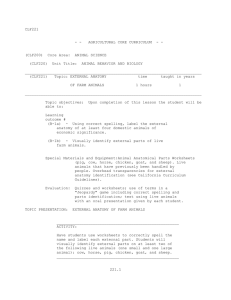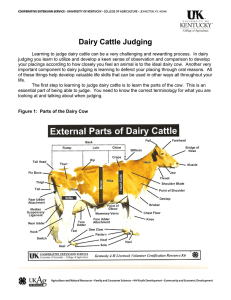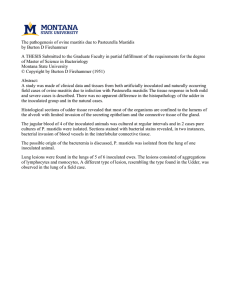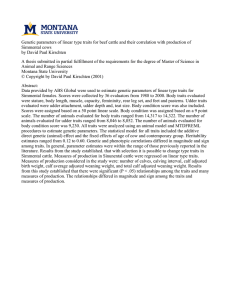MATRIC NO:…………………………..
advertisement
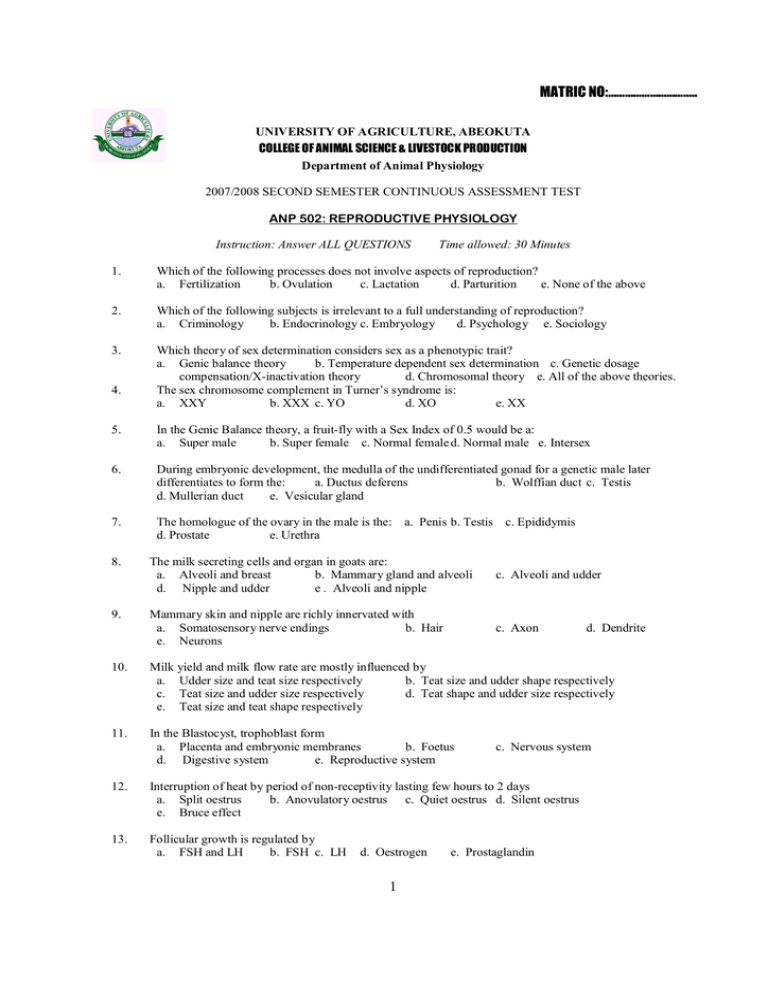
MATRIC NO:………………………….. UNIVERSITY OF AGRICULTURE, ABEOKUTA COLLEGE OF ANIMAL SCIENCE & LIVESTOCK PRODUCTION Department of Animal Physiology 2007/2008 SECOND SEMESTER CONTINUOUS ASSESSMENT TEST ANP 502: REPRODUCTIVE PHYSIOLOGY Instruction: Answer ALL QUESTIONS Time allowed: 30 Minutes 1. Which of the following processes does not involve aspects of reproduction? a. Fertilization b. Ovulation c. Lactation d. Parturition e. None of the above 2. Which of the following subjects is irrelevant to a full understanding of reproduction? a. Criminology b. Endocrinology c. Embryology d. Psychology e. Sociology 3. Which theory of sex determination considers sex as a phenotypic trait? a. Genic balance theory b. Temperature dependent sex determination c. Genetic dosage compensation/X-inactivation theory d. Chromosomal theory e. All of the above theories. The sex chromosome complement in Turner’s syndrome is: a. XXY b. XXX c. YO d. XO e. XX 4. 5. In the Genic Balance theory, a fruit-fly with a Sex Index of 0.5 would be a: a. Super male b. Super female c. Normal female d. Normal male e. Intersex 6. During embryonic development, the medulla of the undifferentiated gonad for a genetic male later differentiates to form the: a. Ductus deferens b. Wolffian duct c. Testis d. Mullerian duct e. Vesicular gland 7. The homologue of the ovary in the male is the: a. Penis b. Testis c. Epididymis d. Prostate e. Urethra 8. 9. The milk secreting cells and organ in goats are: a. Alveoli and breast b. Mammary gland and alveoli d. Nipple and udder e . Alveoli and nipple c. Alveoli and udder Mammary skin and nipple are richly innervated with a. Somatosensory nerve endings b. Hair e. Neurons c. Axon d. Dendrite 10. Milk yield and milk flow rate are mostly influenced by a. Udder size and teat size respectively b. Teat size and udder shape respectively c. Teat size and udder size respectively d. Teat shape and udder size respectively e. Teat size and teat shape respectively 11. In the Blastocyst, trophoblast form a. Placenta and embryonic membranes b. Foetus d. Digestive system e. Reproductive system c. Nervous system 12. Interruption of heat by period of non-receptivity lasting few hours to 2 days a. Split oestrus b. Anovulatory oestrus c. Quiet oestrus d. Silent oestrus e. Bruce effect 13. Follicular growth is regulated by a. FSH and LH b. FSH c. LH d. Oestrogen 1 e. Prostaglandin MATRIC NO:………………………….. 14. Time of implantation in cow a. Day 10 – 22 of pregnancy b. Day 11 – 40 of pregnancy 14 of pregnancy e. Day 12 – 16 of pregnancy c. Day 6 – 8 of pregnancy d. Day 10 – 15. The ......... is used by male poultry to deposit sperm in the female’s (hen’s) cloacal wall a. Penis b. Papilla c. clitoris d. oviduct e. none of the above 16. Reproduction in poultry is different in some ways from reproduction in mammals except : a. The young are not carried in the hen’s body b. Fertilized eggs develop outside the hen’s body c. The testes of the cock are located within the body cavity d. The hen suckles her chicks b. All of the above 17. Spermiation is: a. Release of formed germ cells into the lumen of the seminiferous tubules b. The maturation phase of spermiogenesis c. The acrosomal of spermiogenesis c. Condensation and elongation of chromatin e. All of the above 18. Four phases are noted in the developmental process of spermiogenesis a. Golgi phase b. Ovulatory phase c. Cap phase d. Acrosomal phase d. Maturation phase 19. Spermatozoa: a. are formed within the seminiferous tubules b. are elongated cells consisting of a flattened head and tail c. are each covered by a membrane (plasmalemma or plasmamembrane) d. a-c are correct e. none of the above 20. The female sex of the chicken is determined by which of the following chromosomes a. ZZ b. ZW c. XY d. XX e. ZX 21. The male sexual development in both mammal and birds is associated with regression of which of the following structures a. Wolffian ducts b. Mullerian ducts c. Sertoli cells d. Gonads e. Epididymides 22. Apart from testosterone, testicular descent in males depends on the hormone a. Progesterone b. Oestrogen c. Mullerian inhibiting hormone (MIS) d. Luteinizing hormone (LH) e. Follicle stimulating hormone (FSH) 23. Which of the following is the approximate age at puberty of sheep a. 4 months b. 12 – 20 months c. 6 – 12 month d. 6 – 18 months e. 2 – 3 months 24. The word ‘menarche’ is used to describe a. Functional testis b. Appearance of first menstruation d. Regular ejaculation e. on-going sexual development 25. c. Regular ovulation Reproduction in females is generally regulated by a. Ovary b. Testis c. Hypothalamo-pituitary-ovarian axis Hypothalamo-Pituitary-Thyroid axis 2 d. Pituitary-adrenal axis e.
